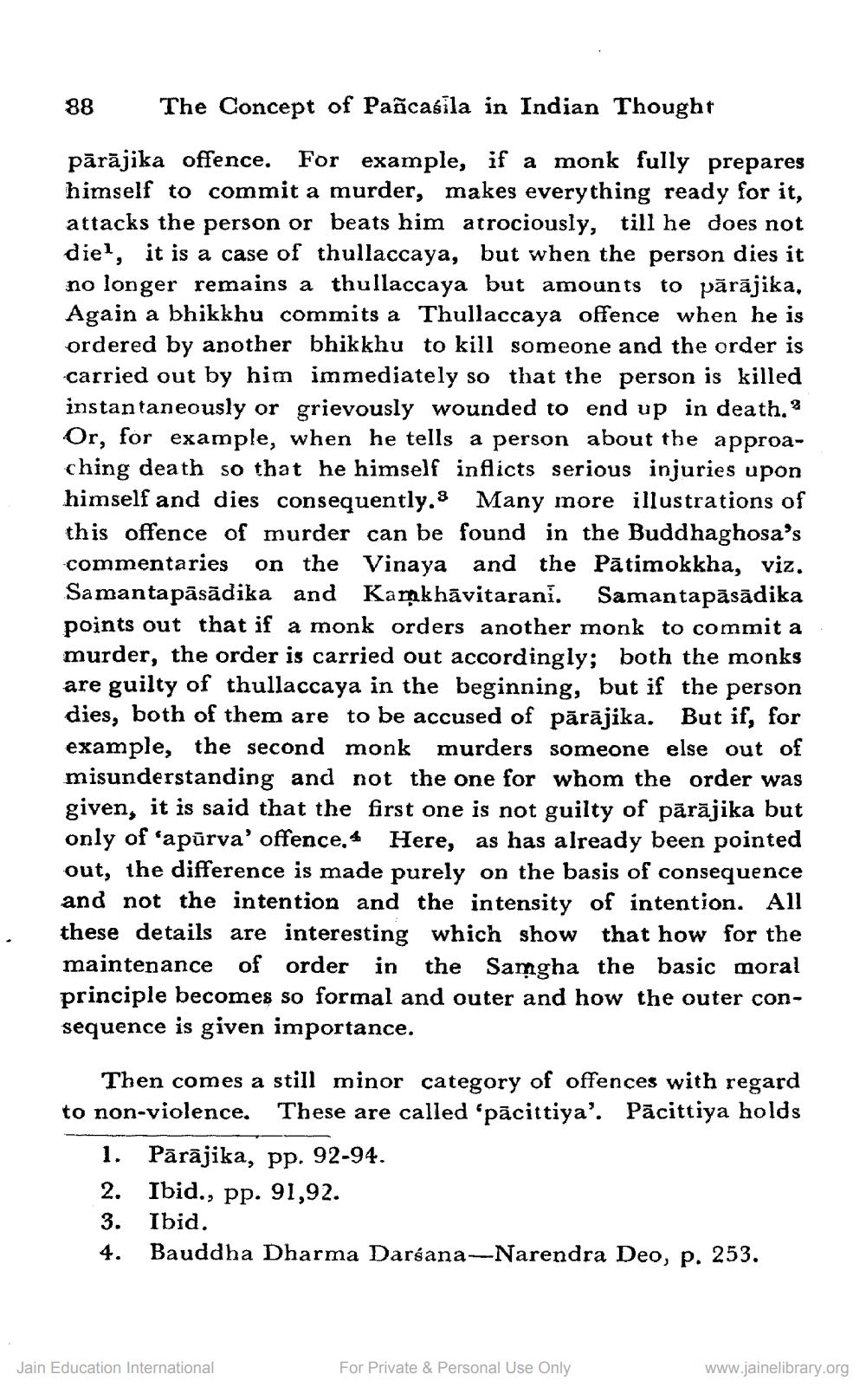________________
88
The Concept of Pañcasila in Indian Thought
pārājika offence. For example, if a monk fully prepares himself to commit a murder, makes everything ready for it, attacks the person or beats him atrociously, till he does not diel, it is a case of thullaccaya, but when the person dies it no longer remains a thullaccaya but amounts to pārājika, Again a bhikkhu commits a Thullaccaya offence when he is ordered by another bhikkhu to kill someone and the order is carried out by him immediately so that the person is killed instantaneously or grievously wounded to end up in death.” Or, for example, when he tells a person about the approaching death so that he himself inflicts serious injuries upon himself and dies consequently.8 Many more illustrations of this offence of murder can be found in the Buddhaghosa's commentaries on the Vinaya and the Pātimokkha, viz. Samantapāsādika and Kamakhāvitarani. Samantapāsādika points out that if a monk orders another monk to commit a murder, the order is carried out accordingly; both the monks are guilty of thullaccaya in the beginning, but if the person dies, both of them are to be accused of pārājika. But if, for example, the second monk murders someone else out of misunderstanding and not the one for whom the order was given, it is said that the first one is not guilty of pārājika but only of 'apūrva' offence. Here, as has already been pointed out, the difference is made purely on the basis of consequence and not the intention and the intensity of intention. All these details are interesting which show that how for the maintenance of order in the Samgha the basic moral principle becomes so formal and outer and how the outer consequence is given importance.
Then comes a still minor category of offences with regard to non-violence. These are called 'pācittiya'. Pācittiya holds
1. Pārājika, pp. 92-94. 2. Ibid., pp. 91,92. 3. Ibid. 4. Bauddha Dharma Darsana-Narendra Deo, p. 253.
Jain Education International
For Private & Personal Use Only
www.jainelibrary.org




